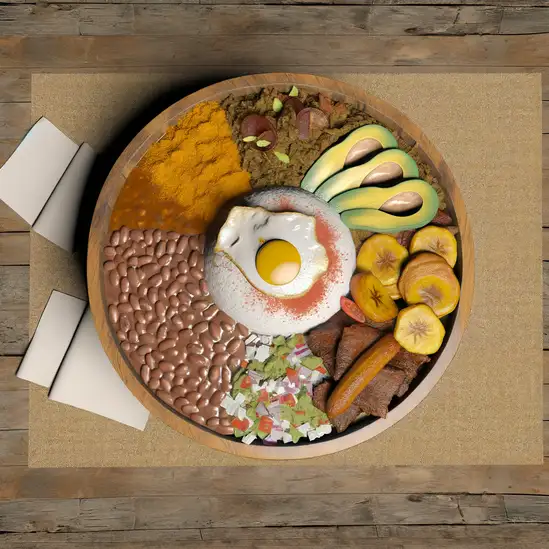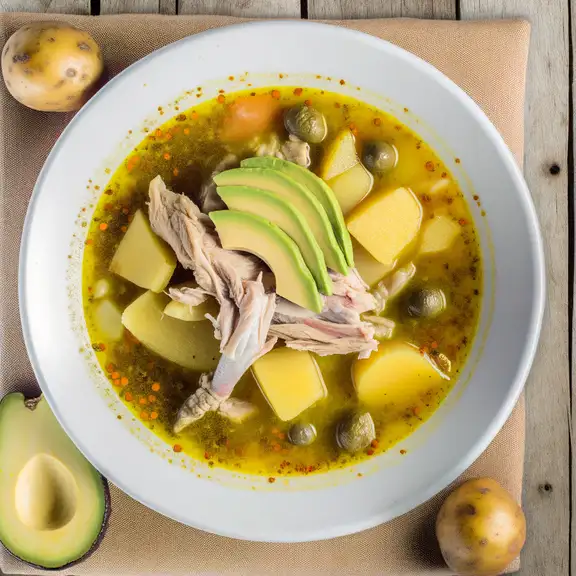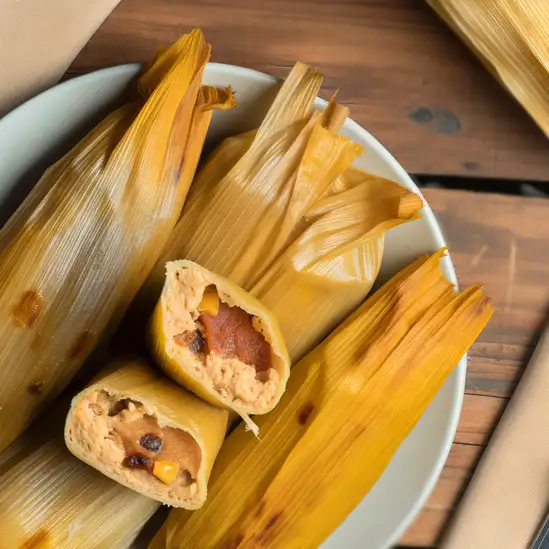



If you ever find yourself craving a place where time slows down just enough to savor every moment,Salento is that kind of town. Nestled in Colombia’s lush coffee region,it feels like stepping into a vibrant watercolor painting—brightly colored houses line cobblestone streets,and the air carries the rich aroma of freshly brewed coffee mingled with the earthy scent of nearby pine forests. There’s a gentle hum of life here:locals chatting animatedly in the plaza,the clatter of horse-drawn carts,and the distant call of birds hidden in the surrounding mountains. What really makes Salento special is its warmth—not just the weather,but the people. Everyone seems to greet you with a smile,eager to share stories or recommend their favorite spot for trout,which is a local specialty. The town pulses with a laid-back energy,where mornings start with the sizzle of arepas on street grills and afternoons invite you to sip coffee on a wooden bench,watching the world drift by. Beyond the town,the landscape steals the show. The towering wax palms of the Cocora Valley sway like sentinels against a backdrop of misty hills,and hiking through this surreal forest feels like wandering through a dream. Salento isn’t just a place to visit—it’s a place to feel alive,to breathe deeply,and to connect with a slower,sweeter rhythm of life that stays with you long after you leave.
The information on this page is currently being reviewed by Tripkliq and should be used as a guide only
Eng word: Hello
Eng pronunciation: OH-lah
Local language: Hola
Eng word: Goodbye
Eng pronunciation: ah-DYOS
Local language: Adiós
Eng word: Thank you
Eng pronunciation: GRAH-syahs
Local language: Gracias
Eng word: How much
Eng pronunciation: KWAN-toh KWEH-stah
Local language: ¿Cuánto cuesta?
Eng word: Toilet
Eng pronunciation: BAH-nyoh
Local language: Baño
Eng word: Help me
Eng pronunciation: ah-YOO-dah-meh
Local language: Ayúdame
Eng word: Yes
Eng pronunciation: SEE
Local language: Sí
Eng word: No
Eng pronunciation: NO
Local language: No
Eng word: Excuse me
Eng pronunciation: pehr-DOHN
Local language: Perdón
Salento was officially founded in 1842, making it one of the oldest towns in the Quindío region. Its establishment marked the beginning of settlement in the Colombian Coffee Axis.
Salento is historically significant as the gateway to the Cocora Valley, home to Colombia's national tree, the wax palm, which can grow up to 60 meters tall and is a symbol of the country's natural heritage.
Salento is renowned for its well-preserved colonial architecture, including colorful facades and traditional balconies, which reflect the town's rich cultural history and charm.
Salento played a key role in the development of Colombia's coffee culture. The region's fertile soil and ideal climate made it a hub for coffee production, contributing to Colombia's reputation as a global coffee leader.
The Camino Nacional, an old trade route connecting Bogotá to the western regions of Colombia, passed through Salento. This route helped the town grow as a strategic stop for travelers and merchants.
Salento is known for preserving traditional crafts, such as basket weaving and wood carving, which have been passed down through generations and are celebrated by locals and visitors alike.
Salento played a pivotal role in the conservation of the wax palm. Efforts to protect this iconic tree began in the Cocora Valley, leading to its designation as Colombia's national tree in 1985.
Salento hosts vibrant cultural festivals, such as the Coffee Festival, which celebrates the region's coffee heritage with music, dance, and traditional food, attracting tourists from around the world.
The area around Salento was historically inhabited by indigenous communities, including the Quimbaya people, who left behind a legacy of gold craftsmanship and agricultural practices.
In Salento, the most common Power Adaptor is Type A, Type B.



A hearty platter that includes beans, rice, ground meat, chicharrón (fried pork belly), avocado, plantain, and a fried egg.

A traditional soup made with meat (often chicken or beef), plantains, yuca, and corn, seasoned with herbs and spices.

Cornmeal cakes that can be grilled, baked, or fried, often filled or topped with cheese, meats, or avocado.

A chicken and potato soup that includes corn and is typically served with avocado, capers, and cream.

A dish made of roasted pig stuffed with rice, peas, and spices, often served during special occasions.

Corn dough filled with meats, vegetables, and spices, wrapped in banana leaves and steamed.

A popular snack consisting of a chocolate-covered cake filled with a creamy filling.
Cartagena de Indias feels like stepping into a vibrant,sun-soaked painting where every corner bursts with color and life. The moment you wander through its cobblestone streets,you’re wrapped in the warm embrace of colonial charm mixed with Caribbean energy. Brightly painted balconies overflow with bougainvillea,and the salty breeze carries the distant rhythm of cumbia and salsa,inviting you to move with the city’s heartbeat. It’s a place where history isn’t just in museums—it’s alive in the laughter spilling from open-air cafes and the clinking of glasses filled with tangy,refreshing aguardiente.
As you stroll along the ancient city walls,the scent of grilled seafood mingles with tropical fruit from street vendors,tempting your taste buds to dive into fresh ceviche or a juicy mango. The sun sets in a blaze of orange and pink over the bay,and the city lights flicker on,casting a golden glow that makes every evening feel magical. Locals greet you with genuine warmth,eager to share stories about Cartagena’s rich past and vibrant present.
What makes Cartagena truly unforgettable is its blend of old-world romance and lively modern spirit. From the bustling plazas where artists display their work to the quiet corners where you can sip a cold cocktail and watch the world go by,the city invites you to slow down and savor every moment. It’s a place that stays with you long after you leave,whispering promises of return.
A Caribbean island city famous for its turquoise waters,coral reefs,and white sandy beaches,making it a top destination for snorkeling,diving,and relaxation.
ExploreImagine stepping into a place where the Caribbean sun wraps you in a warm embrace,and the air carries the salty tang of the sea mixed with the sweet scent of tropical fruit. That’s Santa Marta for you—a city that feels alive with a laid-back rhythm,where the past and present dance together effortlessly. Walking through its colorful streets,you’ll hear the lively chatter of locals,the distant strum of a guitar,and the occasional call of street vendors selling fresh arepas or juicy mangoes. It’s a place where time slows down just enough for you to savor every moment.
Santa Marta’s charm lies in its blend of natural beauty and rich culture. The city sits at the edge of the Sierra Nevada mountains,so you can watch the lush green peaks rise dramatically against the bright blue sky. The nearby beaches invite you to dip your toes in warm,crystal-clear waters or lounge under swaying palms while the ocean breeze cools your skin. But beyond the scenery,it’s the people who make Santa Marta unforgettable—their warmth,their stories,and the vibrant festivals that fill the streets with music and color.
If you’re craving a taste of authentic Colombian life,Santa Marta offers it in every bite of freshly caught seafood,every smile exchanged in the plaza,and every sunset that paints the sky in shades of pink and gold. It’s a city that invites you to slow down,breathe deeply,and fall in love with its easygoing spirit.
If you ever find yourself dreaming of a place where the energy feels alive but never overwhelming,Medellín is that rare city that wraps you in a warm,vibrant hug the moment you arrive. Nestled in a lush valley surrounded by emerald mountains,the air carries a fresh,earthy scent mixed with the sweet aroma of blooming flowers and the distant hum of salsa music drifting from open windows. Walking through its neighborhoods,you’ll notice how the city pulses with life—colorful street art splashes across walls,and locals chat animatedly over cups of rich,dark coffee that tastes like a little piece of heaven.
What really makes Medellín special is its spirit of transformation and resilience. The people here are incredibly welcoming,always ready with a smile or a story about their city’s journey from its past to the vibrant cultural hub it is today. You can feel this optimism in the lively plazas where artists perform,in the bustling markets filled with fresh tropical fruits,and in the innovative cable cars that whisk you up the hills,offering breathtaking views of the sprawling city below.
Don’t miss the chance to savor bandeja paisa,a hearty local dish that’s as bold and comforting as Medellín itself. Whether you’re wandering through the trendy El Poblado district or exploring the historic charm of Laureles,the city invites you to slow down,soak in its rhythms,and discover a place that’s as warm and dynamic as the people who call it home.
If you ever find yourself craving a place where energy hums in the air and every street corner bursts with color,Barranquilla is that kind of city. It’s like stepping into a lively painting where the rhythm of cumbia and salsa pulses through the warm Caribbean breeze. The vibe here is unapologetically joyful—people laugh loudly,dance freely,and welcome you with open arms,making you feel like you’ve stumbled into a big,vibrant family gathering.
Walking through Barranquilla,your senses come alive. You’ll catch the scent of fresh arepas sizzling on street grills,mingling with the salty tang of the nearby Magdalena River. Bright murals splash across walls,telling stories of the city’s rich Afro-Caribbean heritage and its famous Carnival,which is nothing short of a spectacular explosion of costumes,music,and dance. The chatter of vendors,the clinking of glasses filled with chilled aguardiente,and the distant beat of drums create a soundtrack that’s impossible to ignore.
What makes Barranquilla truly special is its spirit of celebration and resilience. It’s a city that wears its history proudly but looks forward with a contagious optimism. Whether you’re wandering through the bustling Mercado de Bazurto or catching a sunset over the river,you’ll feel the heartbeat of a place that’s alive,warm,and endlessly inviting. Trust me,once you’ve experienced Barranquilla,its vibrant soul stays with you long after you leave.
If you ever find yourself craving a place where the ocean breeze carries the scent of salt and tropical flowers,Bocas del Toro in Panama is where you want to be. The moment you step off the boat onto the colorful docks,you’re greeted by a laid-back rhythm that feels like a gentle invitation to slow down and soak it all in. The town hums with a mix of reggae beats,laughter,and the chatter of locals and travelers swapping stories over fresh ceviche or a cold coconut water. It’s a place where the Caribbean vibe isn’t just a mood—it’s woven into the very air.
Walking through the streets,you’ll notice the vibrant wooden houses painted in every shade of the rainbow,their shutters flapping softly in the breeze. The salty tang of the sea mingles with the earthy aroma of rain-soaked jungle nearby. At night,the sky stretches wide and dark,dotted with stars so bright it feels like you could reach out and touch them. The local culture is a beautiful blend of Afro-Caribbean roots and Panamanian warmth,reflected in the food,music,and the genuine smiles of the people.
What makes Bocas del Toro truly unforgettable is how effortlessly it balances adventure and relaxation. You can dive into crystal-clear waters teeming with colorful fish,explore mangrove forests by kayak,or simply lounge in a hammock with a book and the sound of waves lapping nearby. It’s a place that invites you to be present,to breathe deeply,and to fall in love with the simple magic of island life.
Tourists using ATMs in less secure areas may fall victim to card skimming devices that steal card information.
Some establishments may advertise 'authentic coffee tours' but provide a low-quality experience or misrepresent their connection to local coffee farms.
Shops may sell mass-produced items as 'handmade' or 'authentic' local crafts, charging premium prices for inauthentic goods.
Unlicensed individuals may pose as official tour guides, offering subpar or inaccurate tours of the area while charging high fees.
Some restaurants may inflate prices for tourists or add hidden fees to the bill, such as 'service charges' that are not standard.
Tourists may be charged inflated prices for the iconic Jeep Willys rides to nearby attractions like Cocora Valley. Drivers may claim the higher price is due to 'special circumstances' or 'private rides.'
Individuals may approach tourists asking for donations for fake charities or causes, often using emotional stories to solicit money.
Unlicensed or informal taxi drivers may overcharge tourists, especially for trips to and from Pereira or Armenia airports.
The possession, use, and distribution of drugs are strictly regulated in Colombia. While small amounts of certain drugs for personal use have been decriminalized, it is still illegal to buy, sell, or transport drugs. Tourists should avoid any involvement with drugs, as penalties for drug-related offenses can be severe. Additionally, drug use in public spaces is prohibited and can lead to fines or other legal consequences. It is important to respect local laws and avoid any activities related to drugs during your visit to Salento.
In Salento, Colombia, smoking is regulated under national Colombian laws. Smoking is prohibited in enclosed public spaces, workplaces, and on public transportation. Tourists should avoid smoking in restaurants, bars, and other indoor venues unless there is a designated smoking area. Smoking in outdoor public spaces is generally allowed, but it is courteous to be mindful of others and avoid smoking in crowded areas.
Vaping in Salento is subject to similar regulations as smoking. It is prohibited in enclosed public spaces, workplaces, and public transportation. While vaping outdoors is generally permitted, tourists should exercise discretion and avoid vaping in areas where it may disturb others. Some establishments may have specific rules regarding vaping, so it is advisable to check before using e-cigarettes.
What are other people saying about Salento?
Recent Social posts about Salento
There is nothing to show you for now.